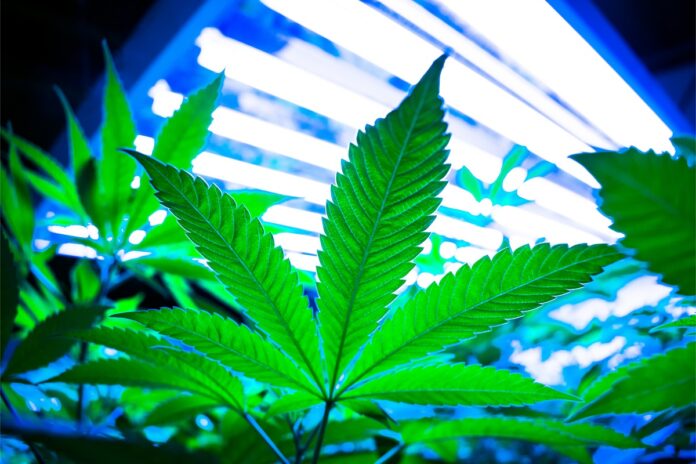Hemp cultivators must manage a multitude of working components within their gardens. To ensure the most bountiful harvests, each aspect of the grow must be dialed in. When feeding regimens, pH levels, target temperatures, humidity, genetics, physical work, and lighting all come together properly is when the healthiest yields are realized.
While last on that list, lighting is the most crucial to photosynthesis, yield, quality, and growing expenses.
Creating the ideal environment for hemp plants is only achievable by understanding the process of photosynthesis (metabolism) and photomorphogenesis (development of compounds in response to the light’s spectrum) and how that relates to the ideal temperatures for leaves.
The impact of light color on plant growth
With LED lights it is possible to tailor the spectrum to avoid over-heating and more efficiently drive growth, while simultaneously reducing cooling requirements. Photosynthesis converts the energy of light, with the aid of pigment chlorophyll, into chemical energy that later will be released to fuel plants’ main activity: growth.
Chlorophyll almost exclusively absorbs light in the blue and red areas of the spectrum. Auxiliary pigments cluster around chlorophyll molecules which helps capture other wavelengths of light and feeds them to the chlorophyll molecules by converting yellow and green photons to red photons. This explains why high-pressure sodium (HPS) lights can grow plants at all as they have virtually no red or blue light in their spectrum.
However, this conversion releases heat and is less efficient than red and blue light which can be absorbed directly by the chlorophyll. This is why plants under HPS lights can’t tolerate temperatures much greater than 80°F, even though in nature, with natural sunlight, hemp plants thrive in temperatures greater than 100°F.
Leaf surface temperature
Leaf surface temperature almost always varies from the ambient room temperature as the plants metabolize and generate compounds. An optimal leaf temperature range for photosynthesis in many plants (excluding arctic, alpine, and desert plants) ranges from 59°F to 86°F (15°C to 30°C) for normal atmospheric concentrations of CO2.
It’s important to understand how leaf surface temperature can differ from ambient air temperature. When a photon of light hits a leaf, it either is reflected or absorbed. Reflected light will not affect leaf surface temperature, but the absorbed photons that are fully utilized by the plant in chemical reactions will heat the leaf’s surface less than photons which are absorbed but not utilized for photosynthesis.
This means that when we measure leaf surface temperature, we indirectly measure the efficiency of the light spectrum for growing plants. Less efficient spectrums will tend to heat the leaf more, while more-efficient spectrums will heat the leaf less as more of the light energy is being converted to chemical energy. When utilizing a spectrum tuned for plant efficiency, leaves stay cooler causing less stress on both the plants and your cooling budget.
Ultraviolet light
Ultraviolet light (below 400nm) also can increase growing efficiency, but in a different way.
UV light triggers plants to create natural sunscreens and antioxidants, which increases THC, CBD, and terpene production, as well as leaf coloration and cell wall thickness.
Thicker cell walls are proven to increase resistance to environmental stress, pests, fungus, and disease both indoors and when plants are first transplanted. While UV is outside of the parabolic anodized reflector (PAR) lighting region, it is present in natural sunlight and critical to achieving plants’ full potential.
A plant-optimized spectrum will help maximize growth, quality, and yield while minimizing energy use. Just choosing the right light can help ensure your growing success!
 Kevin Frender is chief science officer and chief technology officer at Black Dog Grow Technologies. He has been growing indoors with artificial light for more than 35 years, using every commercially available lighting technology along the way. He also starts plants indoors for his summer outdoor garden every year and has decades of experience with hardening-off seedlings for transplantation outdoors. Combined with a vast knowledge of plants and a penchant for science, Frender is an expert in the field of lighting.
Kevin Frender is chief science officer and chief technology officer at Black Dog Grow Technologies. He has been growing indoors with artificial light for more than 35 years, using every commercially available lighting technology along the way. He also starts plants indoors for his summer outdoor garden every year and has decades of experience with hardening-off seedlings for transplantation outdoors. Combined with a vast knowledge of plants and a penchant for science, Frender is an expert in the field of lighting.


